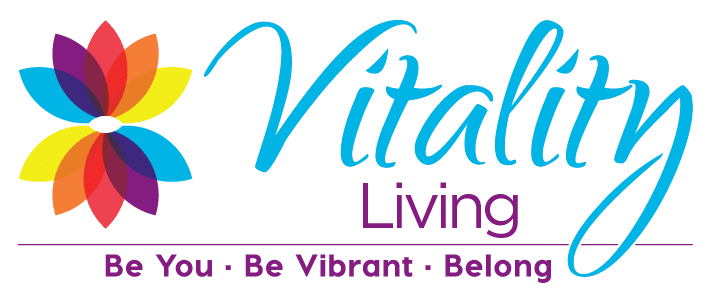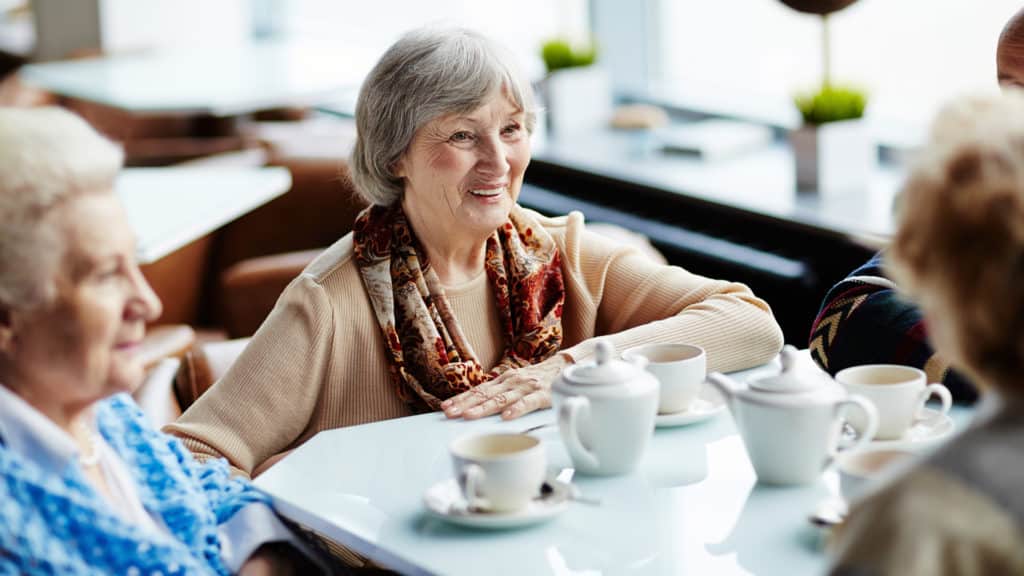In elementary school, making a new friend was as simple as sharing a snack at lunch or a ball on the playground. By high school, the politics of friendship— requiring shared interests, the right attitude, and probably the right clothes—become decidedly more challenging. Even though it might be tough to fit in during adolescence, at least you’re surrounded by potential friends. In adulthood, making new friends may feel downright impossible. Fortunately, senior living communities can help.
Friendship: Why Is It So Hard?
It’s easy to look around or watch TV and think you’re the only person without a giant circle of friends. You’re not alone. The challenges of making friends as an adult, especially in the senior years, have been the subject of blog posts, self-help books, and endless therapy sessions. A number of factors conspire to make adulthood friendship more difficult:
- In childhood, most of us spend our days with our peers. In adulthood, you have to seek out new people. In the senior years, it’s even harder to be around peers because disability, decreased mobility, and declining health make it difficult to remain involved in your community.
- Social anxiety is real — even for adults. In childhood, making friends is a direct undertaking. Many children feel completely comfortable directly asking someone to be their friend. As adults, we worry about how we will be perceived. Insecurity can make it hard to initiate a conversation and even harder to ask someone to coffee or a movie.
- Children have a lot in common. They go to school, fight with their parents, and love playing. As they mature into adults, interests and lifestyles diversify. Differences in socioeconomic and relationship statuses, political and religious beliefs, and various other differences become more apparent. That leaves more room for conflict and judgment and narrows the pool of possible friends.
- In childhood, many people live in neighborhoods full of children. In adulthood, you might live several miles away from your nearest peer. This means friendship demands more effort.
There’s a confounding factor too: The longer you go without close friends, the rustier your social skills become. That creates a vicious cycle of poor social skills, insecurity, and increased isolation that can be difficult to break out of.
Download The Complete Guide to Choosing Between Senior Living Options
The Epidemic of Senior Loneliness
Declining social skills, geographic separation, and numerous other factors have conspired to create an epidemic of senior loneliness. More than half of seniors over the age of 75 live alone. Moreover, 17 percent of seniors are in contact with loved ones less than once per week, And 43 percent say they are lonely on a regular basis.
Surprisingly, being married or having a partner doesn’t always protect against loneliness. One person cannot fulfill all of your needs. Moreover, as you age, a romantic relationship can shift toward one of caregiving. If you care for a partner with dementia or a serious disability, it’s easy to feel isolated and depressed.
Senior Living Communities: An Antidote to Loneliness
Senior living communities, which offer a solution to many of the friendship barriers seniors face, allow you to live among your peers. Just as it was easier to make friends in college or high school, this ready access to people your age offers a pool of potential friends. And because your neighbors are other seniors who have chosen to live in communities, you can be reasonably certain that they, too, are interested in getting to know their peers. That can make it easier to break the ice.
The best senior living communities offer activities that pair seniors with people who share their interests, such as gardening, exercise, spirituality seminars, religious services, and even community service options. When you live on your own, getting to these events can be difficult—maybe even downright impossible if you don’t drive. When events take place right in your neighborhood, they become much more accessible. What’s more, many senior living communities offer transportation, friendly reminders about upcoming events, and easy enrollment in classes, thereby making it easy to become an active, engaged member of your community.
Why You Need Friends
Having friends feels good. It can help you stay healthier too. Loneliness is a better predictor of death than obesity. It’s linked to a higher risk of coronary heart disease and stroke and increases the risk of cognitive decline. Lonely people are more likely to fall, to use emergency services, and to need nursing care at a younger age.
Research into loneliness is ongoing. So doctors still don’t fully understand why friendship is so important to our health. Some possibilities follow:
- Friendship can encourage you to stay physically active.
- Friendship keeps your mind active, and an active mind is linked to better cognitive health in the senior years.
- Friendship, which potentially creates an incentive to live healthier, eat more nutritious food, and keep up with regular medical visits, makes life better.
The Fine Art of Making Friends As You Age
No matter where you live, a few strategies can help you find, keep, and enjoy friendships that last a lifetime:
- Get involved in activities that interest you. These activities act as a pre-screening tool, ensuring you have at least one thing in common with other participants.
- Try planning conversation topics and questions ahead of time. It can feel a little silly, but a few go-to stories can help break the ice. People love talking about themselves, so try asking about their jobs, their families, or their hobbies.
- Recognize that almost everyone appreciates a friendly smile and warm conversation. There’s no need to feel anxious about talking to a stranger.
- Reach out if you’ve made a connection. Endlessly calling or emailing is never a good idea, but making the first friendship move can encourage a shy person to reach back. The worse thing that can happen is that they’re uninterested, and that leaves you where you are now. You have nothing to lose.
- Consider what you have to offer as a friend. People want friendships that are reciprocal, warm, and giving. It’s not enough to be interesting or to have shared interests. Particularly in the senior years, people lean on their friends for support. By offering that support—in the form of flowers at a funeral, a friendly card, a shoulder to cry on, and more—you increase the likelihood you’ll get the same support when you need it.
Friendship requires a little effort, a lot of understanding, and a willingness to grow and change. You might even have to accept a bit of criticism every now and then. But the payoffs—a longer, happier, more richly connected life—are worth every shred of effort friendship requires.




